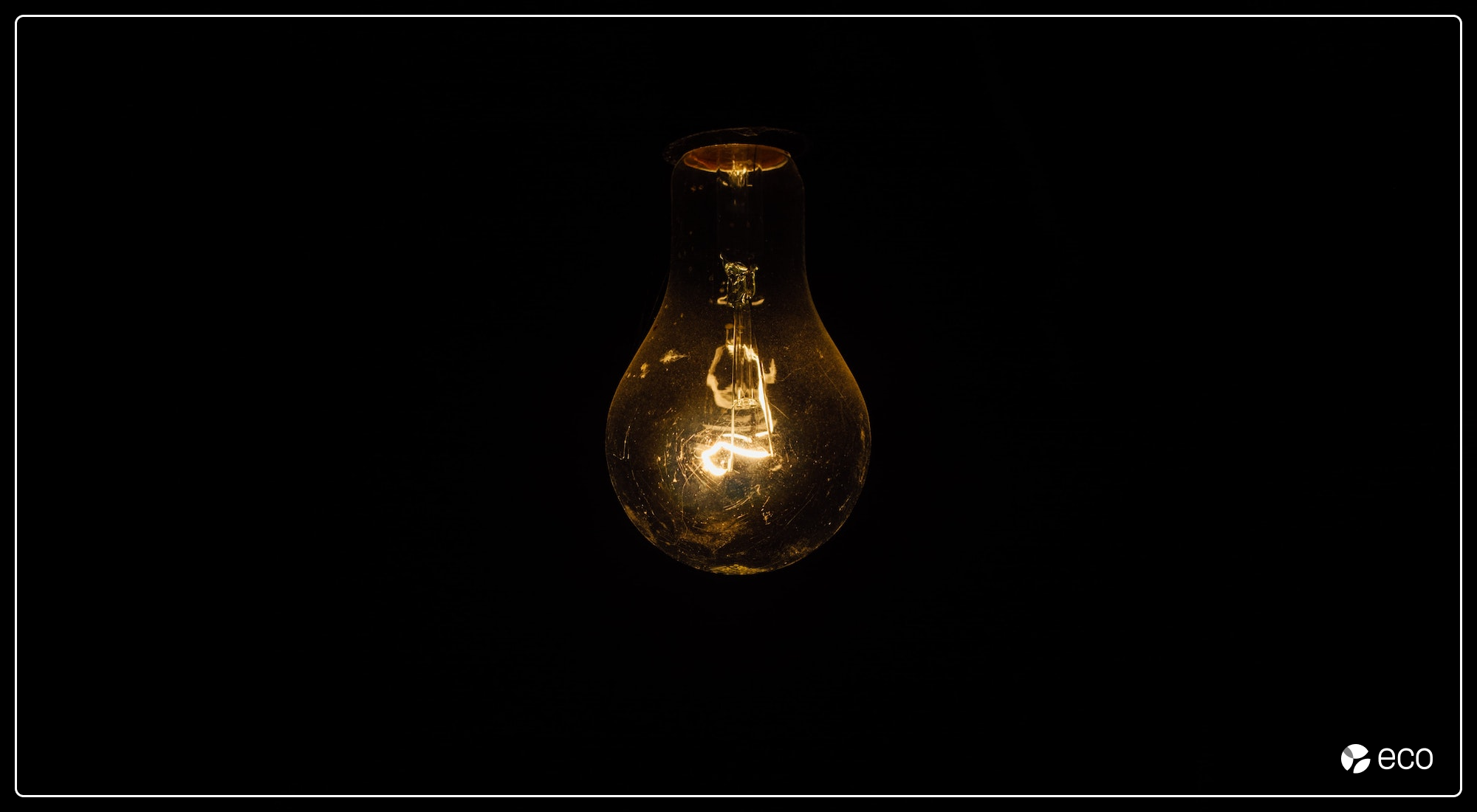How the evolution of artificial light made us all wealthier
Darkness—and the cure that humans invented—reveals an informative history of money.

American and French inventors were furiously working on a new technology called arc lights when Thomas Edison established the Edison Electric Light Company (which would later become General Electric) in 1880. Within weeks, the inventor raised $50,000 for his team to create and produce what would become a revolutionary product: the light bulb.
Whereas chemist Humphry Davy discovered that carbon electrodes in air could produce light when presented as an arc in the early 19th century, Edison evolved the idea and forever changed human society.
The mass production of electric lights is its own story of money thanks to all the patents Edison was filing for. GE is the 33rd largest company in America for a reason. But as journalist Jacob Goldstein writes in Money: The True Story of a Made-up Thing, darkness reveals an even more informative history of money.

And then there was light
In the very long arc of human history, controlling light—or looking at it another way, dispelling darkness—completely changed how we interact with nature. Wax poetic all we want, Goldstein notes that the dark wasn’t something to be celebrated.
The dark was not some beautiful thing you went out and explored. It was something dangerous. Something that trapped you.
The electric light wasn’t the first technology to untrap humans. But it was the first technology that mostly everyone could afford. And this is where the story of light becomes a story of money.
As Goldstein writes, turning light on with the flick of a switch explains a lot about the modern world: our rise out of starvation and most every career possibility we now enjoy; and at the other end of the cost-benefit spectrum, climate change.
Goldstein draws from the work of Yale economist Bill Nordhaus, who wanted to know how much the price of artificial light has changed over the last 4,000 years. Quite a lot, it turns out.
First, Nordhaus investigated the cost of sesame oil that burned lamps in ancient Mesopotamia. Crunching the numbers, he found that a day’s worth of work afforded the average person 10 minutes of light. That’s not really going to change your relationship with darkness much, especially with all the other bills you have to cover.
Incredibly, the technology didn’t change much for thousands of years. Some people tried out firefly lanterns. The British stuck wicks down the throats of dead birds to eke out some luminescence. Then, in the 17th century, the whaling industry found a number of productive uses of whale oil, including in lamps.
The result? A day’s worth of work gave the average person enough income for an hour’s worth of light.
Darkness still reigned supreme.
In 1850, a few decades after Davy’s electric breakthrough, a Canadian physician with a love for geology named Abraham Gesner invented kerosene while toying around with a type of asphalt called albertite. A worker could now afford five hours of light for a day’s wages.
Darkness wasn’t over, but its time was running out.

The road to riches
Roughly a year after forming his company, Thomas Edison was granted US patent 223,898. The lightbulb was a reality.
Edison went on to fight another battle with the Serbian-American inventor Nikola Tesla over whether alternating or direct currents were the best conductor of energy.
Regardless, the world had changed. The price of light became ridiculously cheap. And thanks to its pervasiveness, workers made more money. A lot more money. Modern light bulbs burn for 20,000 hours and cost a buck or two (or a little more if you want better efficiency).
Thanks to affordable artificial light, medicine and public health were dramatically improved. Humans gained not only money and time, but positive health outcomes as well. Everything you see around you right now would likely not have been possible without artificial light.
Progress compounds. There would be no true industrial and scientific revolutions without artificial light. Whereas it took the world thousands of years to minimally improve the efficacy of light technology, once we had a grasp of how it works, we were off to the races.
As Goldstein concludes, there were detrimental effects—namely, day-round, year-round production thanks to artificial light has led to the massive human imprint known as climate change.
Everything is a tradeoff. Perhaps this technology will lead to solutions to that problem. Regardless, in most every measure, we’re better off as societies thanks to it.
[The lightbulb] has made almost everyone richer. It means, in real terms, almost everybody has more money than their ancestors could have imagined.